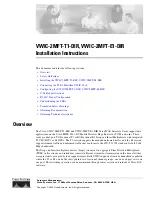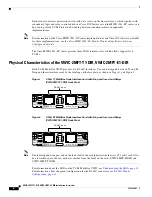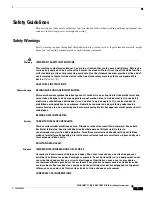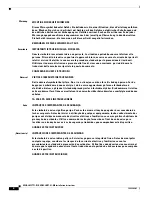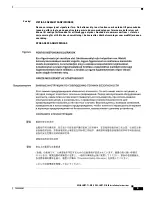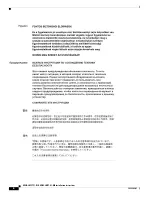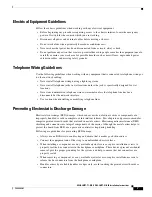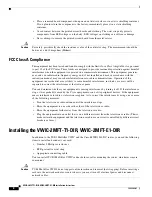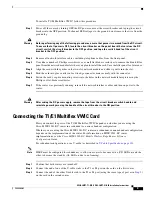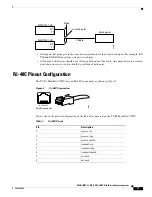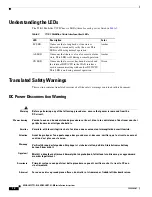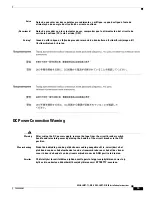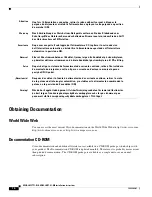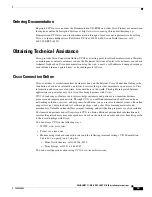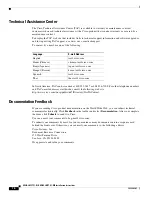
10
VWIC-2MFT-T1-DIR, VWIC-2MFT-E1-DIR Installation Instructions
78-15842-01
Step 4
Connect the other end of the Y-cable to the BTS patch or demarcation panel at your site.
Step 5
Turn on power to the routers.
Step 6
Check that the CD LEDs goes on, which means that the card’s internal DSU/CSU is communicating with
the DSU/CSU at the T1 or E1 service provider central office.
For non-redundant configurations, use a straight-through, shielded RJ-48C-to-RJ-48C cable.
Note
If you choose to use the T1/E1 Multiflex VWIC in a non-redundant configuration, you must close the
relays on the card using the
standalone
subcommand. For more information, see the “
Cisco MWR
1941-DC Mobile Wireless Edge Router Software Configuration Guide
.”
Step 1
Confirm that the router is turned off.
Step 2
Connect one end of the cable to the T1 or E1 port on the card.
Step 3
Connect the other end to the BTS patch or demarcation panel at your site.
Step 4
Turn on power to the router.
Step 5
Check that the CD LED goes on, which means that the card’s internal DSU/CSU is communicating with
the DSU/CSU at the T1 or E1 service provider central office.
Configuring the VWIC-2MFT-T1-DIR, VWIC-2MFT-E1-DIR
For information about configuring the T1/E1 Multiflex VWICs, see the “
Cisco MWR 1941-DC Mobile
Wireless Edge Router Software Configuration Guide
.”
Y-Cable Specifications
Depending on the Cisco MWR 1941-DC router implementation, the T1/E1 Multiflex VWIC can be used
in a standalone router or in redundant Cisco MWR 1941-DC router configurations. For redundant
configurations, a special Y-cable is required to connect the active and standby routers. The Y-cable
provides a dual E1 or T1 PRI connection.
This section describes the specifications of the Y-cable.
•
T1/E1 Multiflex VWIC Y-cables should be made with 4 twisted-pair, shielded, 28-gauge cables.
•
The cable length of each stub (from the RJ-48C connector to the junction point) should not exceed
3 inches (76 mm).
•
The cable length from junction point to the patch panel is determined by the customer.

